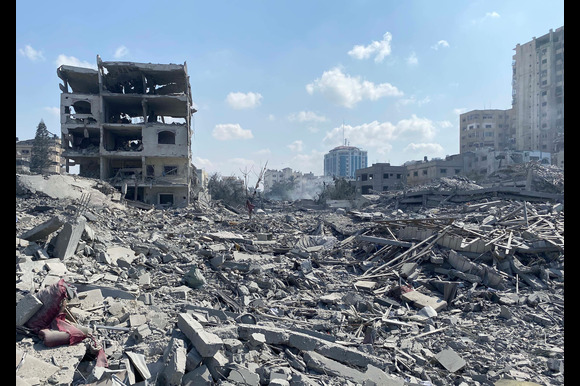
Wikipedia
The Israeli military has announced the start of a large-scale ground and air offensive in Gaza, aimed at defeating Hamas and securing the release of remaining hostages still held in the enclave. The operation, named “Gideon’s Chariots,” marks a significant escalation in Israel’s campaign following months of stalled ceasefire efforts.
According to the Israel Defense Forces (IDF), troops have been deployed to seize “strategic areas” of the Gaza Strip. The announcement, made on the IDF’s Hebrew-language X (formerly Twitter) account, emphasized the offensive’s objective to neutralize Hamas and ensure that all hostages are brought home. However, the English-language version of the post did not mention the operation’s official name.
The Hamas-run civil defense and Gaza health ministry reported that around 250 people have been killed since Thursday due to intensified Israeli bombardments. Israel claims that it struck more than 150 Hamas-affiliated targets across the strip within a 24-hour period.
This military escalation follows the collapse of a two-month ceasefire, after which Israel imposed a blockade on humanitarian aid entering Gaza. Despite growing international appeals to resume negotiations and ease the blockade, Israel has pushed forward with increased military activity. The timing of the offensive—coinciding with the conclusion of U.S. President Donald Trump’s regional tour—suggests that diplomatic efforts have failed to yield a breakthrough.
Prime Minister Benjamin Netanyahu had earlier signaled the country’s intent to carry out a robust ground incursion into Gaza, stating the objective was to capture and retain control over parts of the territory. According to the Times of Israel, the new operation will involve repositioning civilians to southern Gaza, direct assaults on Hamas strongholds, and ensuring that aid supplies do not fall into Hamas’s hands.
U.S. President Donald Trump commented during his Middle East visit that “a lot of people were starving” in Gaza, underscoring the growing humanitarian concerns.
Meanwhile, international condemnation is mounting. United Nations Human Rights Chief Volker Türk criticized the Israeli escalation, warning that the combination of intensified bombings, mass displacement, widespread destruction, and denial of aid could amount to ethnic cleansing.
“This latest barrage of bombs, forcing people to move amid the threat of intensified attacks, the methodical destruction of entire neighbourhoods, and the denial of humanitarian assistance underline that there appears to be a push for a permanent demographic shift in Gaza that is in defiance of international law,” Türk said.
U.S. Secretary of State Marco Rubio echoed concerns, saying the U.S. was “troubled” by the unfolding events and emphasized the need to prevent further civilian suffering.
On the ground, humanitarian conditions are dire. Victoria Rose, a British reconstructive surgeon at Nasser Hospital in Khan Younis, told the BBC World Service that her medical team was overwhelmed, physically deteriorating, and seeing increasing numbers of malnourished children.
“The children are really thin,” she said. “We’ve got a lot of youngsters whose teeth have fallen out.” She noted that many children also suffer from severe burn injuries and are at high risk of infections due to extreme malnutrition, making recovery difficult.
A UN-backed report published earlier this week concluded that Gaza’s population is at “critical risk” of famine. Despite these findings, the Israeli government continues to deny that a food crisis exists in Gaza.
Israel initiated its current military campaign following Hamas’s surprise cross-border attack on October 7, 2023, in which around 1,200 people were killed and 251 others taken hostage. Israeli authorities say 57 hostages are still being held in Gaza.
As the operation intensifies, the prospects for a ceasefire appear more remote, raising fears of prolonged violence and worsening humanitarian conditions for the enclave’s already struggling population.




